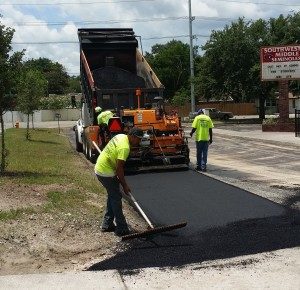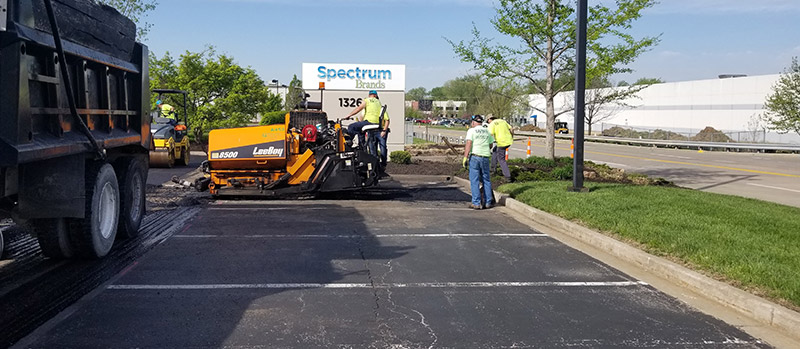The Buzz on A1 Professional Asphalt & Sealing Llc
Table of ContentsThe Of A1 Professional Asphalt & Sealing LlcThe Greatest Guide To A1 Professional Asphalt & Sealing LlcThe Buzz on A1 Professional Asphalt & Sealing LlcThe Best Strategy To Use For A1 Professional Asphalt & Sealing LlcSome Known Questions About A1 Professional Asphalt & Sealing Llc.

The oil in a vehicle engine is not just oil. The REOB contains all the additives that were in the waste oil as well as the wear steels from the engine (mostly iron and copper).
Nonetheless, by making lots of blends making use of different REOB examples and various asphalt binders, the variants mainly can be balanced out. A number of States supplied samples of well-known REOB structure to TFHRC researchers, who analyzed the samples to compare the percent of added (recognized) REOB to the located (tested) amount. The evaluations showed a similar portion of included and located REOB.
The Single Strategy To Use For A1 Professional Asphalt & Sealing Llc
They obtained a frustrating reaction. The TFHRC scientists assessed 1,532 samples from 40 States, one Canadian province, and 2 Government Lands Highway divisions. They evaluated each example twiceamounting to more than 3,000 evaluations. None of those States recognized that the asphalt they were buying consisted of REOB. One State urged its examples had no REOB.
Of the 1,532 samples tested, 12 percent included REOB, and some had considerably high levels of it at 1020 percent. The greatest level was 34 percent in a sample from Texas, which TxDOT had made use of in a patching compound. This screening likewise exposed the visibility of phosphoric acid in 11 percent of the samples, and 2 percent had ground tire rubber.
2 years back at TRB's yearly conference, the Federal scientists held an REOB workshop and offered the findings of their research laboratory examinations to a standing room-only group. Although some companies do not particularly prohibit REOB, they do impose physical tests that prevent its useeffectively a restriction. what is cold mix asphalt. Others do not ban it by requirements, yet have arrangements with asphalt suppliers to avoid the use of REOB
Some Ideas on A1 Professional Asphalt & Sealing Llc You Should Know
Ohio and Texas restriction levels to much less than 5 percent of the asphalt. To establish a reputable examination method that all States can utilize, the TFHRC scientists established up a round-robin examination plan.
In overall, the scientists prepared and delivered 720 blends. The individuals are checking the examples separately utilizing the guidelines supplied by the TFHRC scientists. The round-robin screening is virtually completed, and TFHRC is in the procedure of gathering the results. The output will be a recommended AASHTO examination technique that any State can embrace and make use of (diagonal parking vs straight parking).
The sidewalk with REOB, which lies 0.6 mile (1 kilometer) from the pavement without REOB, has the same subgrade, web traffic density, and climate. Nonetheless, the section of Highway655 with 5 to 10 percent REOB revealed considerable splitting. In this instance, the existence of REOB was the recognized root cause of fracturing at a low temperatures.
A section of test sidewalk in Minnesota (MN1-4) discovered to consist of REOB additionally fractured prematurely. The pavement executed well for the first 3 to 4 years, but after that began to fracture.
Unknown Facts About A1 Professional Asphalt & Sealing Llc
The tests were not considerable, however they showed check these guys out that at degrees of 6 percent or even more, the tensile stamina of the asphalt dropped dramatically. At a level of 3.5 percent REOB, the variation in the physical examination techniques was greater than the result of REOB. As a matter of fact, it was hard for scientists to analyze whether REOB existed.

One binder criterion thought about is the difference between the low temperature crucial requirements temperature level for stiffness (S) in the flexing beam of light rheometer and the bending light beam rheometer creep slope (m-value) noted as Tcritical. TC = TC (S) TC (m-value). Examination of this specification is still ongoing. Two independent research study groups, one from AASHTO and the various other from the Asphalt Institute, ended that even more research study is needed on using REOB in asphalt.
Formerly, all asphalt screening measured engineering buildings such as rigidity. These examinations do disappoint what products had been added to the asphalt. One example obtained during the TFHRC research had an extremely odd evaluation. The example had the following examination outcomes: Superpave PG 64-28 with a heat quality of 67.3 Tcritical on the flexing beam of light rheometer was 6.7 degrees Celsius.

Excitement About A1 Professional Asphalt & Sealing Llc
These outcomes show there are weak points in the standardized engineering testing methods that might be exploited. The producer may have an economic advantage and the product passes all the standardized tests, but the item may not be advantageous to ensuring long-term efficiency. To resolve this problem and the growth of brand-new asphalt additives and extenders, TFHRC is starting a research program to make use of handheld spectroscopic gadgets, x-ray fluorescence spectroscopy, and Fourier change infrared spectroscopy to allow analyses to be done in the field instead than having to take samples back to the lab.
 Tahj Mowry Then & Now!
Tahj Mowry Then & Now! Charlie Korsmo Then & Now!
Charlie Korsmo Then & Now! Soleil Moon Frye Then & Now!
Soleil Moon Frye Then & Now! Suri Cruise Then & Now!
Suri Cruise Then & Now! Atticus Shaffer Then & Now!
Atticus Shaffer Then & Now!